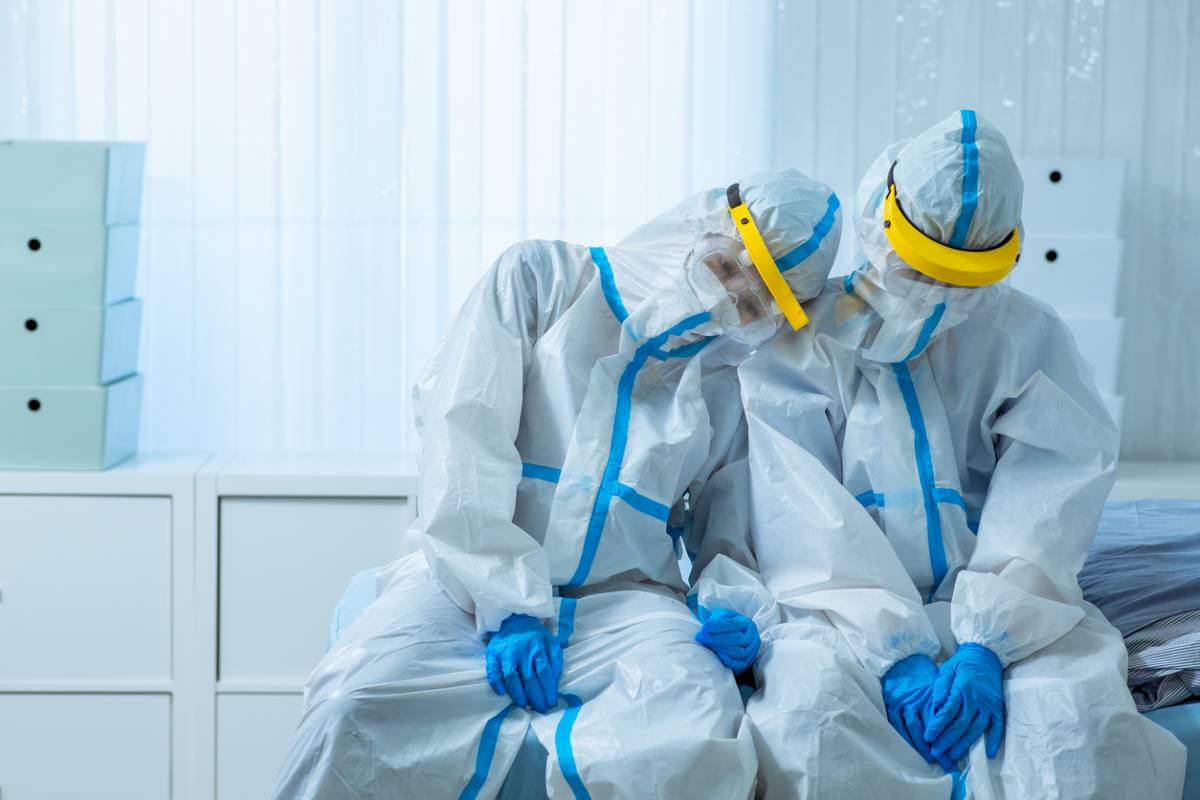The COVID-19 pandemic has had a substantial impact on anesthesia professions. Along with colleagues in other areas, many anesthesia providers were instrumental in managing critical patients and establishing respiratory support for the seriously ill. However, anesthesia providers have also experienced burnout, highlighting the need for greater support and changes to the workplace.
One positive impact of COVID-19 is that it has exposed the value of anesthesia professions. Many anesthesiologists during COVID-19 rose to leadership challenges—filling roles that did not exist prior to COVID-19, solving problems never previously faced, developing clinical innovations, and swiftly setting up new patient care services 1. Around the world, anesthesia colleagues have reached out to each other through social media and videoconferencing technologies to share information and offer advice.
In this light, the crisis of COVID-19 has brought about opportunities that demonstrate the outcome benefits of anesthesia, the critical role of anesthesiologists across the spectrum of patient care, and the leadership potential of anesthesiologists at various scales, including locally, nationally, and internationally 1.
However, the impact of COVID-19 only exacerbated pre-existing issues within the healthcare workforce, namely overworking providers. The rate of professional burnout in anesthesiology ranges from 15% to 65%, reaching a critical number during COVID-19 2. Specific concerns regarding proper and sufficient personal protective equipment and fears of personal exposure or transmission to others, in particular, had a psychological impact on anesthesiologists during the COVID-19 pandemic, negatively impacting the well-being of the anesthesia workforce.
Addressing physician burnout must include individual, team, and institutional strategies. Preventative measures include but are not limited to assessing professional wellness, as well as interventions to enhance wellness and reassessments. Some strategies to achieve a wellness culture might also focus on flexibility, increasing engagement, creating clear expectations, creating a community at work, and expressing gratitude.
In addition, it has been suggested that department wellness committees provide psychologic first aid straining, including on self-care and peer support, and individualized support to those in need, alongside fostering a workplace culture that promotes self-care and resilience. Meanwhile, department and organizational leadership should also continue to strive for adequate personal protective equipment and clear communication, all the while including frontline healthcare providers in decision-making 3.
Improvements can still be made in a number of areas, including but not limited to the advancement of best practices, preparedness, remote education, or research 4.
Preparedness in particular can help promote a higher quality of patient care, education, research, and culture building. Simulation and quality assurance activities can also be implemented to ensure the sustainable maintenance of preparedness. The North American anesthesiology community’s motto of “Vigilance” appears to be more appropriate now than ever 4.
COVID-19 has had a serious impact on anesthesia professions, on both the professional and personal front. However, the steps required to ensure a sustainable culture of wellness among anesthesia professions are clear 5.
References
1. McCartney, C. J. L. & Mariano, E. R. COVID-19: bringing out the best in anesthesiologists and looking toward the future. Reg. Anesth. Pain Med. 45, 586–588 (2020). doi: 10.1136/rapm-2020-101629.
2. Aron, R., Pawlowski, J., Shukry, M. & Shillcutt, S. The Impact of COVID-19 on the Status of the Anesthesiologists’ Well-Being. Advances in Anesthesia (2021). doi:10.1016/j.aan.2021.07.009
3. O’Brien, J. M., Goncin, U., Ngo, R., Hedlin, P. & Chakravarti, A. Professional fulfillment, burnout, and wellness of anesthesiologists during the COVID-19 pandemic. Can. J. Anesth. 68, 734–736 (2021). doi: 10.1007/s12630-021-01916-4.
4. Meng, L. & McDonagh, D. L. Impact of Coronavirus and Covid-19 on Present and Future Anesthesiology Practices. Frontiers in Medicine (2020). doi:10.3389/fmed.2020.00452
5. Gangakhedkar, G. & Solanki, S. Impact of the COVID-19 pandemic on anesthesiologists in India: A cross-sectional online survey of the practices, preparedness, and mind-set. J. Anaesthesiol. Clin. Pharmacol. 36, 331–336 (2020). doi: 10.4103/joacp.JOACP_375_20.


